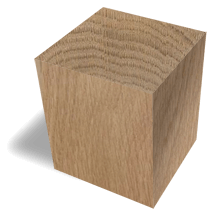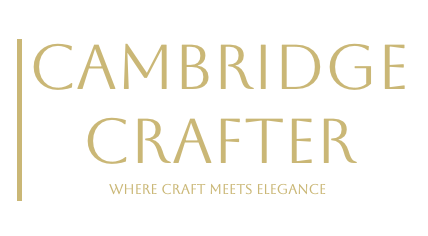
Oak
Oak, in the UK context, typically refers to English Oak (Quercus robur), also known as Pedunculate Oak, a deciduous hardwood tree native to most of Europe, including the British Isles, and extending to western Asia. It thrives in a variety of soils, often in mixed woodlands, and grows to 50–100 feet tall with trunk diameters of 3–5 feet, sometimes living for centuries with a broad, spreading crown and deeply fissured bark.
The heartwood of English Oak is a light to medium golden-brown, often with a pale yellowish or straw-like hue when freshly cut, darkening slightly with age to a richer brown. The sapwood is a pale cream or whitish, distinctly separate. The grain is typically straight but can be wavy in figured pieces, with a coarse, ring-porous texture due to its large earlywood pores, and a moderate natural lustre. Oak often features prominent medullary rays, especially when quartersawn, producing a distinctive “tiger stripe” or “flake” pattern that adds visual depth.
English Oak has a density of around 650–750 kg/m³, making it a hard, strong, and durable wood with good stability once seasoned. It’s moderately resistant to decay due to its high tannin content, particularly in the heartwood, but it’s susceptible to insect attack, such as by wood-boring beetles, if untreated. The wood works well with both hand and machine tools, though its coarse grain can cause tearout if tools aren’t sharp, and its high tannin content can corrode iron tools or cause staining if in contact with metal and moisture. Oak glues, stains, and finishes effectively, often taking on a warm, golden tone with oil-based finishes, and it’s frequently used with a clear coat to highlight its natural grain.
When worked, English Oak has a mild, oaky aroma, sometimes with a slightly earthy note, which fades after finishing. In the UK, it’s a cornerstone of traditional woodworking, used for centuries in structural applications like beams, shipbuilding (e.g., for the Royal Navy), and furniture, as well as for flooring, panelling, and cooperage (e.g., whisky barrels). Its strength and attractive grain make it ideal for both rustic and high-end pieces, from oak-framed buildings to bespoke cabinetry. Quartersawn oak is particularly prized for Arts and Crafts or period furniture, where its ray flecks are showcased.
English Oak is widely available and moderately priced in the UK, often sourced from sustainable forestry or coppiced woodlands, a practice that has supported its use for centuries. Quercus robur is not listed on CITES Appendices and is considered of least concern by the IUCN, though challenges like oak processionary moth and acute oak decline can affect local populations. Its versatility, durability, and deep cultural significance in British craftsmanship make English Oak a timeless choice for a wide range of projects.
